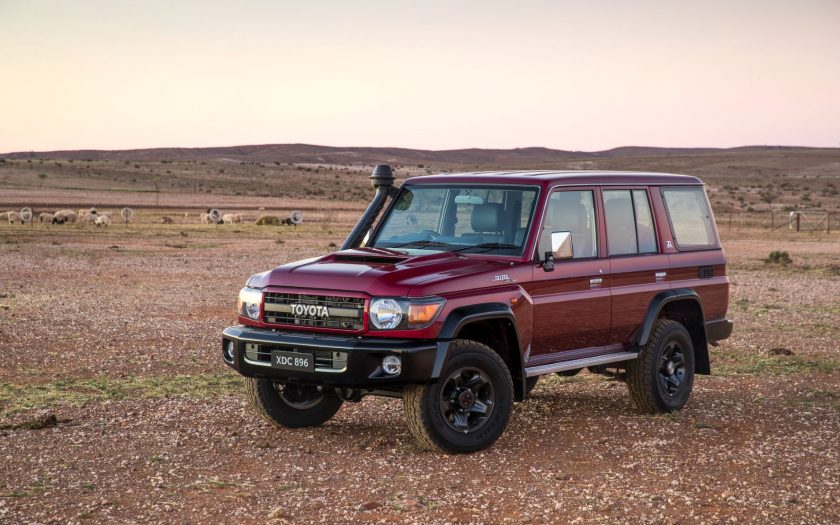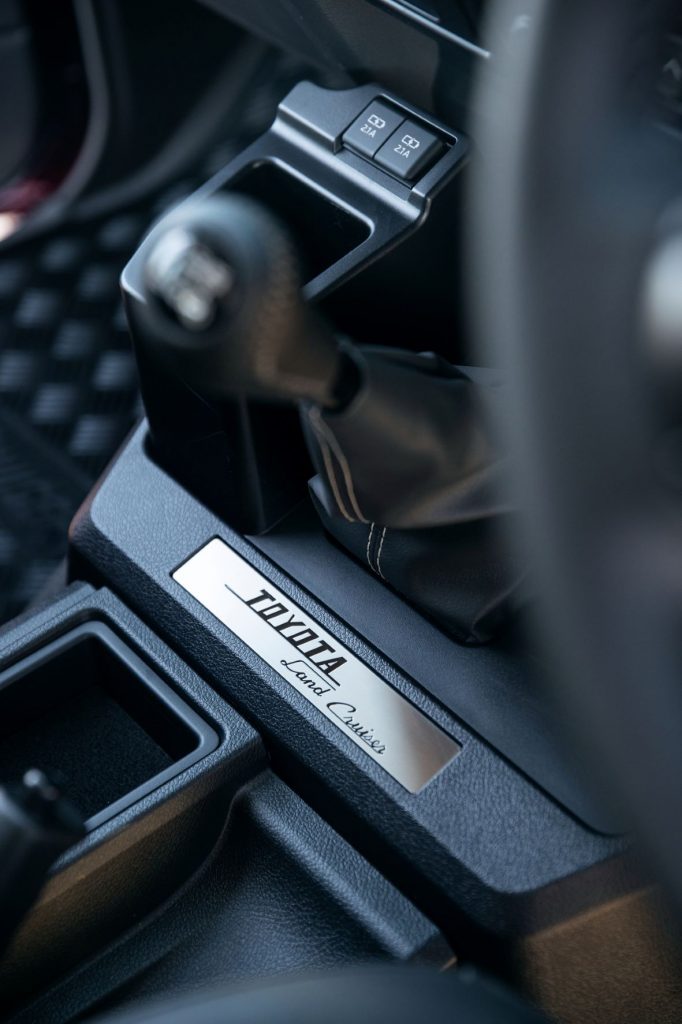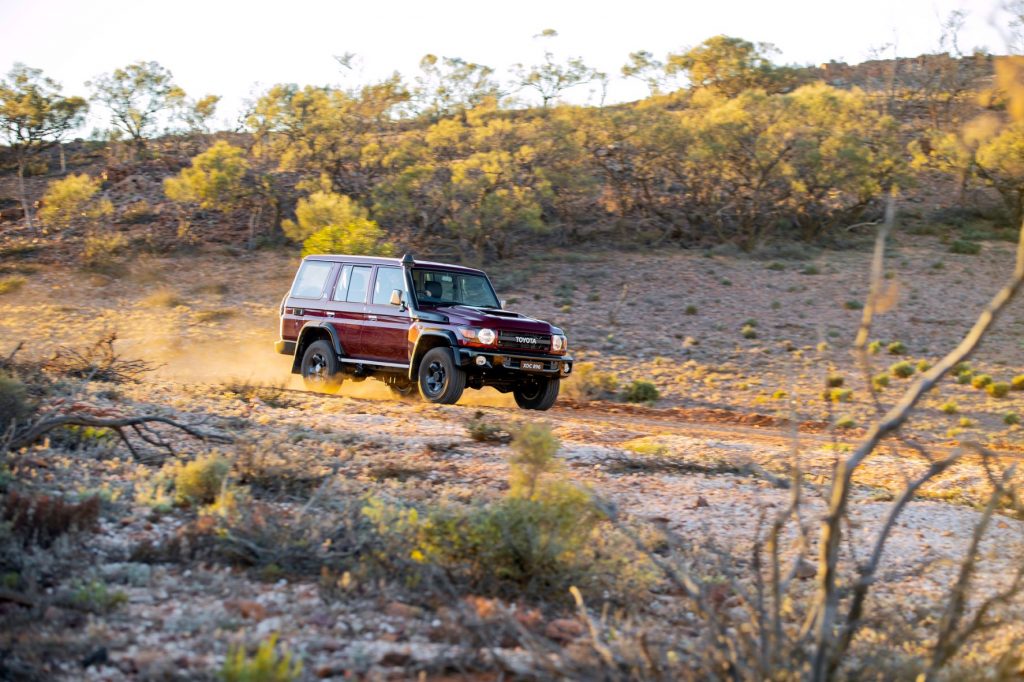Chris Riley tests the 2022 Toyota LandCruiser 70 Series with pricing, specs, ride and handling, safety, verdict and everything the over-50 driver needs to know.
Summary: The LandCruiser 70 Series is based on commercial underpinnings, and it’s the most capable 4×4 Chris has ever driven. But it’s not for everyone.
2022 Toyota LandCruiser 70 Series 70th Anniversary Wagon
Pricing: $80,050 (single cab), $82,600 (double cab), $78,500 (double cab) all plus on road costs
Warranty: Five-years, unlimited km
Safety: 5-star ANCAP (79 Series single cab, tested 2016, not applicable to wagon)
Engine: 4.5-litre direct injection common rail diesel V8 engine
Power: 151kW at 3400rpm
Torque: 430Nm at 1200-3200rpm
Transmission: 5-speed manual, 4×4 drive
Body: 4910mm (long); 1870mm (wide); 1940mm (high)
Weight: 2265kg
Towing capacity: 3500kg
Wheels: 16-inch alloy
Ground clearance: 230mm
Wading depth: 700mm
Turning circle: 12.6mm
Fuel tank: 130 litres, 180 litres (long range tank)
Thirst: 10.7L/100km (unleaded 91 RON)
Consumption on test: not stated
seniordriveraus consumption on test: not tested
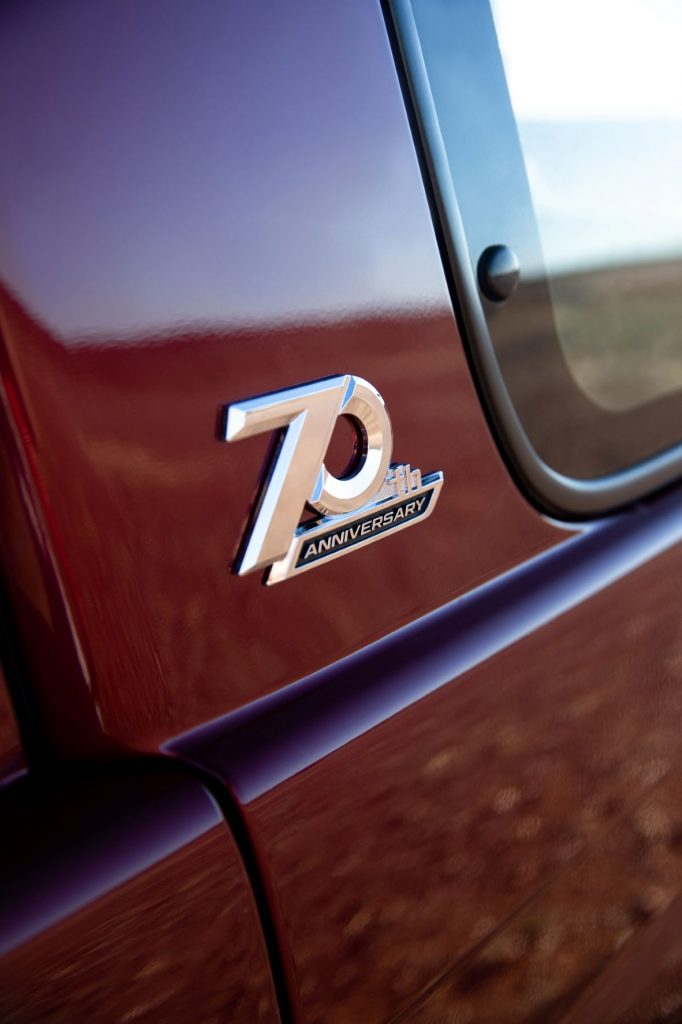
[review]
If you’re looking for something to go off road in, then look no further.
If you’re not, then look elsewhere.
By off road, we mean really off road – mud, rocks, fire trails, creek crossings, the Top End, winches and high-lift jacks – the whole shooting match.
Land Cruiser 70 Series is without doubt the most capable 4×4 we’ve driven, a hard-edged, no compromise off roader built to tackle the rough stuff – a workhorse built strong for commercial application.
But ladies and gentleman, this is not a car for everyone – so please choose carefully.
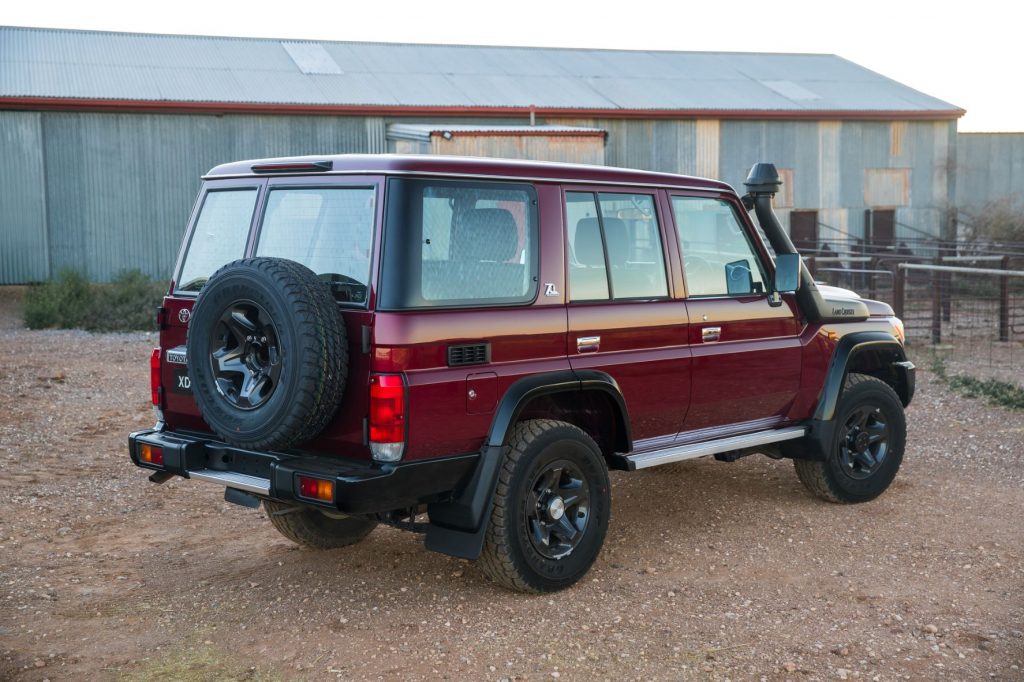
70 Series comes in wagon, cab-chassis and troop carrier configuration.
The one we’re looking at is the wagon, in fact the 70th Anniversary wagon, marking the debut of the Toyota BJ way back in 1951.
Just 600 Anniversary editions will be offered – 80 of them wagons.
What’s it cost?
The Land Cruiser 70th Anniversary special edition is based on the flagship GXL grade that is offered as a 76 Series wagon, plus 79 Series single and double cab chassis pick-up.
The 70 Series, commonly referred to as the Land Cruiser “workhorse”, was last updated in 2016.
Anniversary models are priced from $80,050 (single cab), $82,600 (double cab) and $78,500 (wagon) and come in three colours: French Vanilla, Merlot Red and Sandy Taupe.
Visually, it is distinguished by a black heritage grille with prominent Toyota lettering, matching black front bumper and wheel arch flares.
The dark treatment continues with black 16-inch alloys and headlight bezels, while the front fog lights and daytime running lights have been upgraded to LEDs.
Marking the anniversary is a ‘Heritage’ Land Cruiser badge above the front wheel arch, as well as a ’70th Anniversary’ emblem.
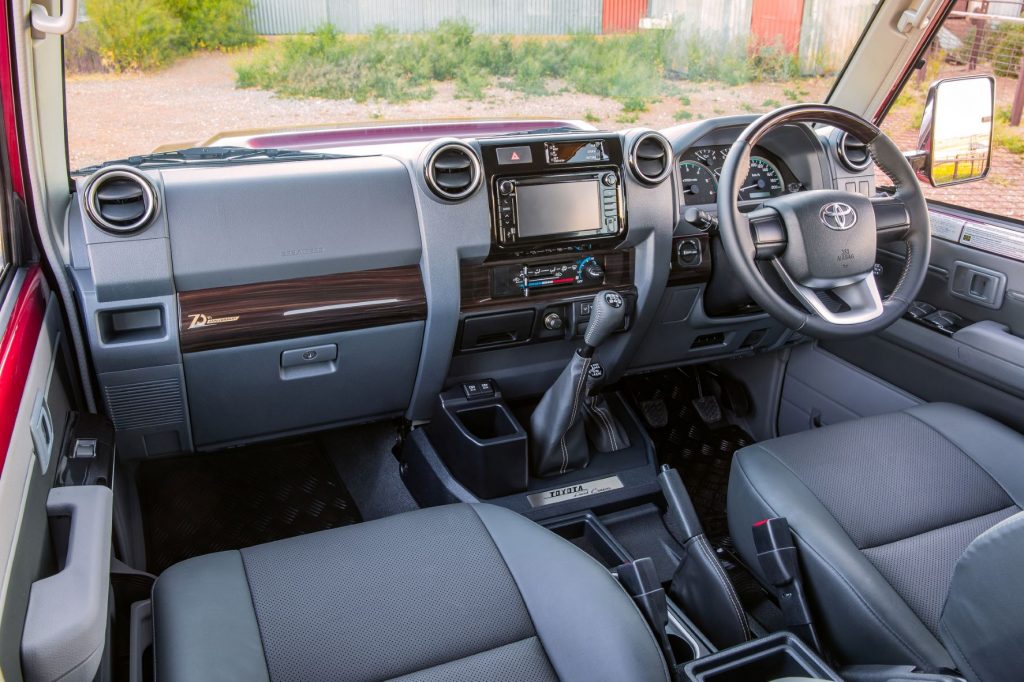
Inside, there’s a number of premium options not previously offered on 70 Series.
The seats are trimmed in synthetic black leather, with leather accents for the steering wheel and gear shifter.
There’s also some woodgrain-look trim for the wheel and instrument panel, silver accents for the air vents and black treatment for the switch trims on the doors.
A newly designed black centre console has also been fitted, along with two additional 2.1A Type A USB chargers plus a pair of cupholders.
What the 70 Series doesn’t get is many of the mod cons that we take for granted these days.
Things such as push-button start, auto lights and wipers, parking sensors and a rear view camera – not to mention a touchscreen that you don’t need a magnifying glass to see (it’s 6.1 inches).
With four speakers, the infotainment system features satnav, voice activation, AM/FM radio, Bluetooth, single CD player and the Toyota Link app – but no Apple CarPlay or Android Auto connectivity.
There’s four 2.1A power sockets in all, but none of them seemed able to deliver sufficient juice to charge my wife’s phone in a reasonable period of time.
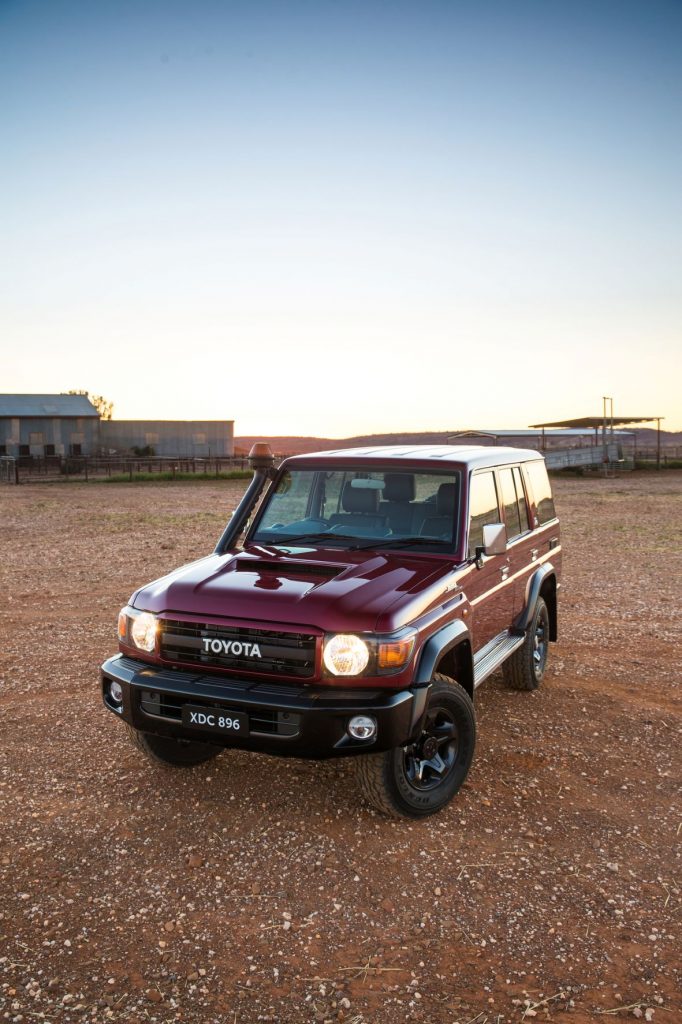
Want to adjust the external mirrors. It’s time to dial friend, one who can stand outside and move them around for you, until they find the right position.
The radio aerial is metal, motorised and rises like magic when you turn on the ignition – the way they used to back in the ’80s.
But, in some concessions to the modern world, it does get cruise control, power windows and remote central locking.
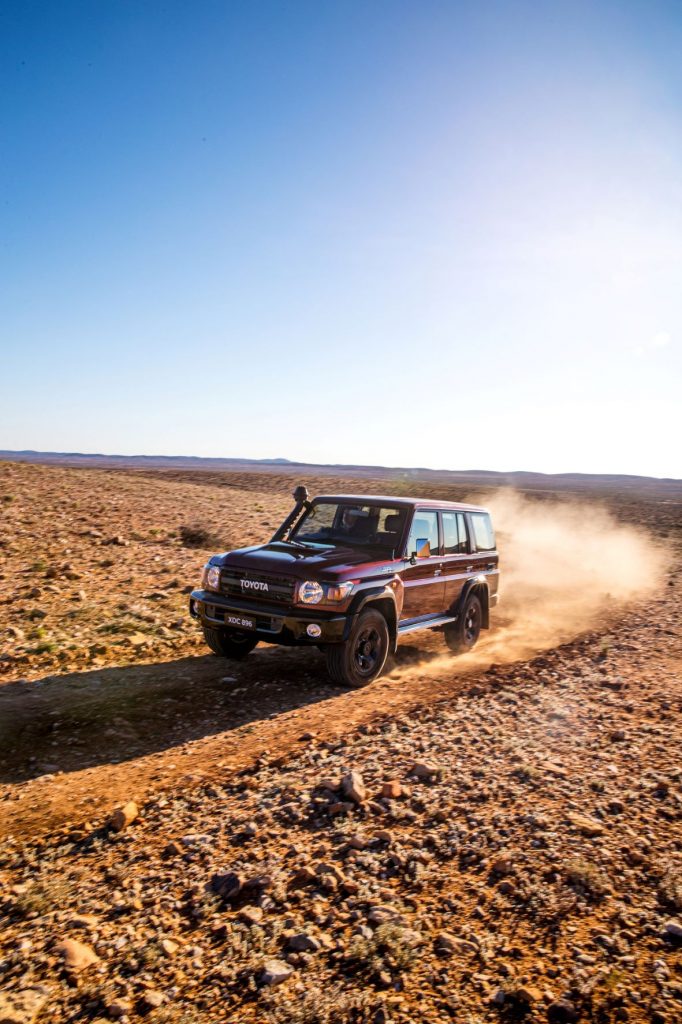
What’s it go like?
All versions are powered by a 4.5-litre V8 turbo-diesel that produces 151kW of power at 3400 rpm and 430Nm of torque from 1200 to 3200 rpm.
It’s paired with a five-speed manual transmission that has been tweaked, with taller second and fifth gears, the latter allowing it to cruise more easily on motorways.
Drive is to the rear wheels most of the time, with high and low range gearing, auto-locking front hubs and front and rear diff locks.
Shifting between high and low range is accomplished via a traditional transfer lever (a second, stubby little gear stick).
Combined fuel consumption from the single 130-litre tank is a claimed 10.7L/100km.
Other models get two 90-litre tanks making for a combined total of 180 litres.
The wagon is 4910mm long, 1870mm wide and 1940mm high, with a 2730mm wheelbase and weighs in at 2265kg.
Turning circle is 12.6 metres and can be something of a problem.
You get disc brakes all round, but the back is underpinned by old school leaf springs.
Tow rating is 3500kg.
The wagon seats five with barn-style 60:40 split rear doors and a basic rear bench that is better suited to two bods than three.
New bucket seats enhance safety, comfort and ergonomics with a new structure that helps prevent whiplash.
Revised mounting points contribute to the overall safety rating while new coverings deliver greater side bolstering and lumbar support.

Other improvements include under-dash padding for the passenger and relocation of the steering link behind the front axle, for increased safety.
Although the cab-chassis version earns a five-star safety, this rating doesn’t carry over to the wagon.
All variants are however fitted with a full electronic safety package, including five airbags, vehicle stability control (VSC), active traction control (A-TRC), hill-start assist control (HAC), brake assist and electronic brake-force distribution in addition to the existing anti-skid brakes.
The bonnet now has a pronounced “power bulge”, which contributes to sufficient clearance above engine-bay components to meet pedestrian impact requirements.
Newly adopted VSC automatically disengages in low range. A-TRC, which eliminates the need for a limited-slip differential, operates in high and low ranges, but can be disengaged for sand.
Clearly, this is not a vehicle designed for city streets.
It’s large, heavy and truck-like, with rubbery steering, spongy brakes and plenty of body roll.
It’s a long throw shift action and the clutch requires some effort and practice, and it’s possible to miss third if you rush it – but at least it holds the brake for a second or two on hills.
It can also take three gear changes just to get across an intersection, unless you start off in second – which is the recommended method.
Be warned. Other drivers are sure to become impatient.
Tight turns, even moderate turns, can necessitate a three-point turn.
Surprisingly, however, it’s quite comfortable and even my wife likes driving it.
Initially, I found myself wanting a sixth gear, but the taller fifth proved adequate, with the tacho turning over around 2000 revs at 110km/h.
The cabin is a big echoey space with plenty of road noise at higher speeds that can render the Bluetooth connection to your phone almost unusable.
Off road, it’s a very different story.
With 230mm of ground clearance, 700mm wading ability, a snorkel for breathing, low range crawler gearing, plus front and rear diff locks, the 70 Series takes some stopping.
It’s always been a treat to take it off the beaten track, to explore washed out fire trails and the addition of traction control and hill-start assist makes it even better.
Take it slow, look first, don’t do anything silly and the Land Cruiser won’t let you down.
70 Series is covered by a 5-year/Unlimited kilometres warranty, with service intervals of 10,000km and services capped at $375 a time.
What we like
- Virtually unstoppable
- Long range fuel tank
- Water snorkel standard
What we don’t like
- Bit basic
- Slow out of the gates
- Large turning circle
- Airtight doors require a good shove to close
What over-50s need to know
Love this car. Love the Land Rover Defender too, but I’d take the Cruiser any day of the week.
Having said that, I’m yet to drive the new Defender. It’s just that Australia never seems to get a guernsey as one of the places testing takes place.
Land Cruiser on the other hand is developed specifically for the Australian environment, with tough ladder-frame chassis, live-axles, impressive ground clearance, part-time 4×4, powerful yet efficient engine, excellent load-carrying capacity and long touring range.
But the 70 Series is definitely not the car for everyone, especially older folks.
It’s about as truck-like as it gets when it comes to SUVs and sits high off the ground, making entry and exit a challenge.
On the other hand, it is very popular with people out west, people on the land who value its prodigious off-road ability.
They’re usually leathery, weather-beaten examples who are used to hard work and whose agility belies their age.
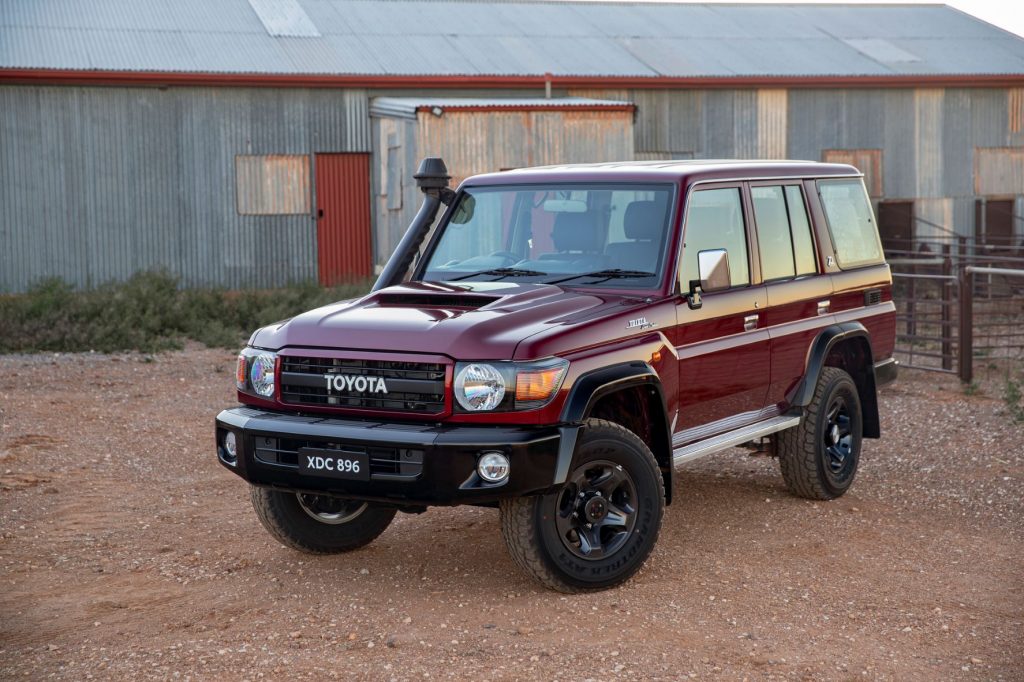
seniordriver comments
The LandCruiser has a large and loyal following, but it really is a blast from the past. SUVs and off-roaders have come a long way since the original LandCruiser arrived, but the 70 Series keeps one wheel firmly in the past.
If you’re thinking about buying one, make sure you can live with its unforgiving nature.
The interior looks quite welcoming on first glance, and there are a lot more luxuries than used to be the case. However, the absence of Apple CarPlay and Android Auto is simply not good enough in the third decade of the 21st century. Ditto for exterior mirrors that need to be manually adjusted. At least the radio antenna is motorised!
As Chris points out, this is not a vehicle designed for the urban environment, and the huge 12.6-m turning circle will annoy other road users.
Safety is another consideration. The cab-chassis version was tested in 2016 and scored five ANCAP stars, but that was a long time ago. Safety standards (and criteria) have moved on, and the rating doesn’t apply to the wagon anyway.
